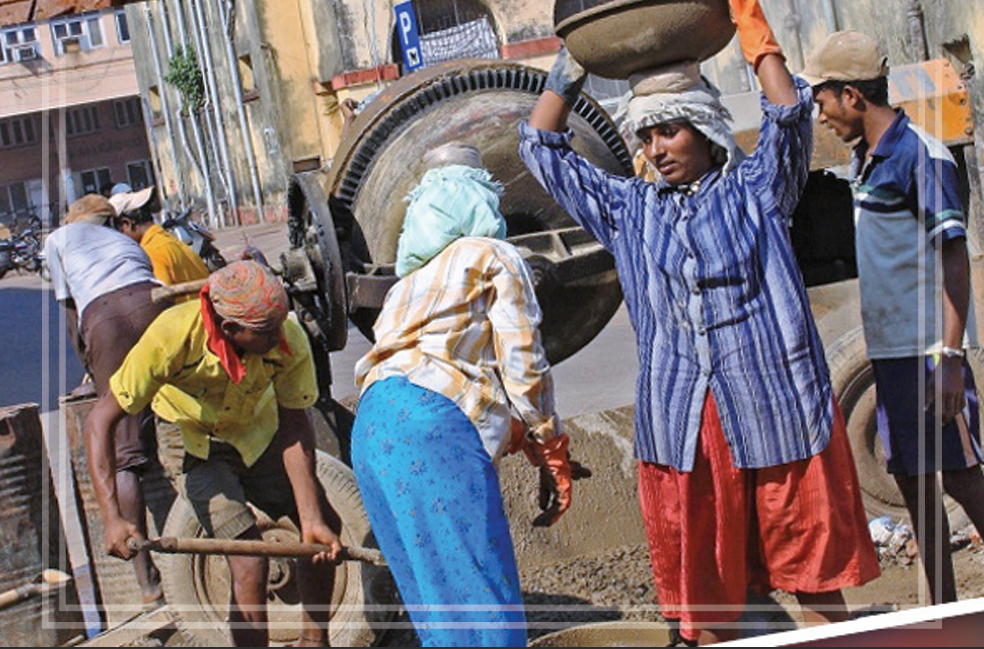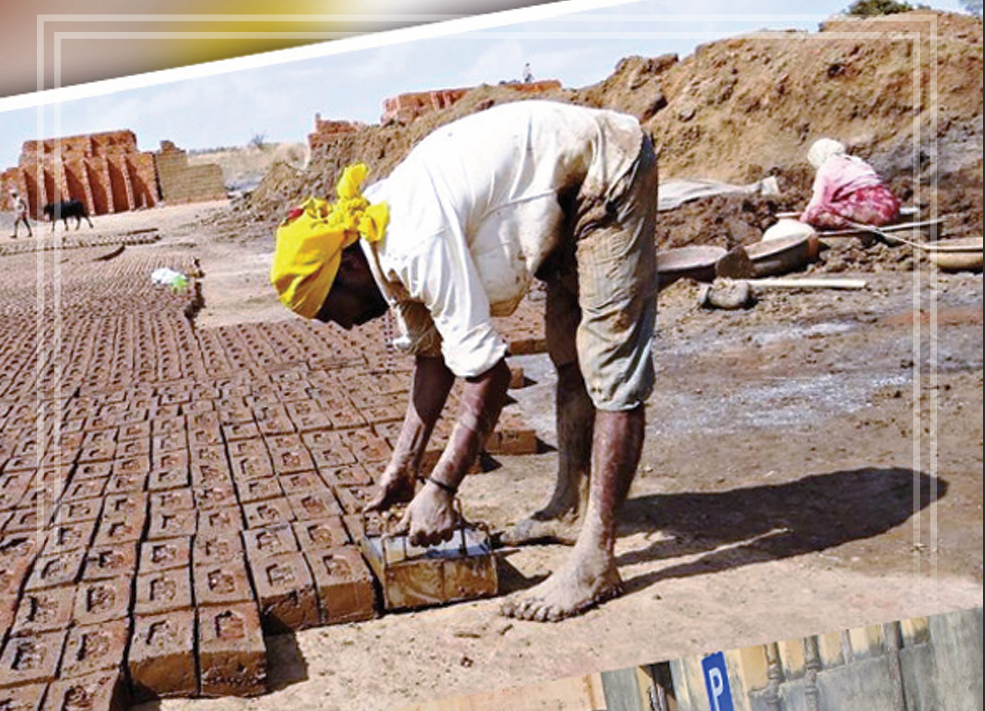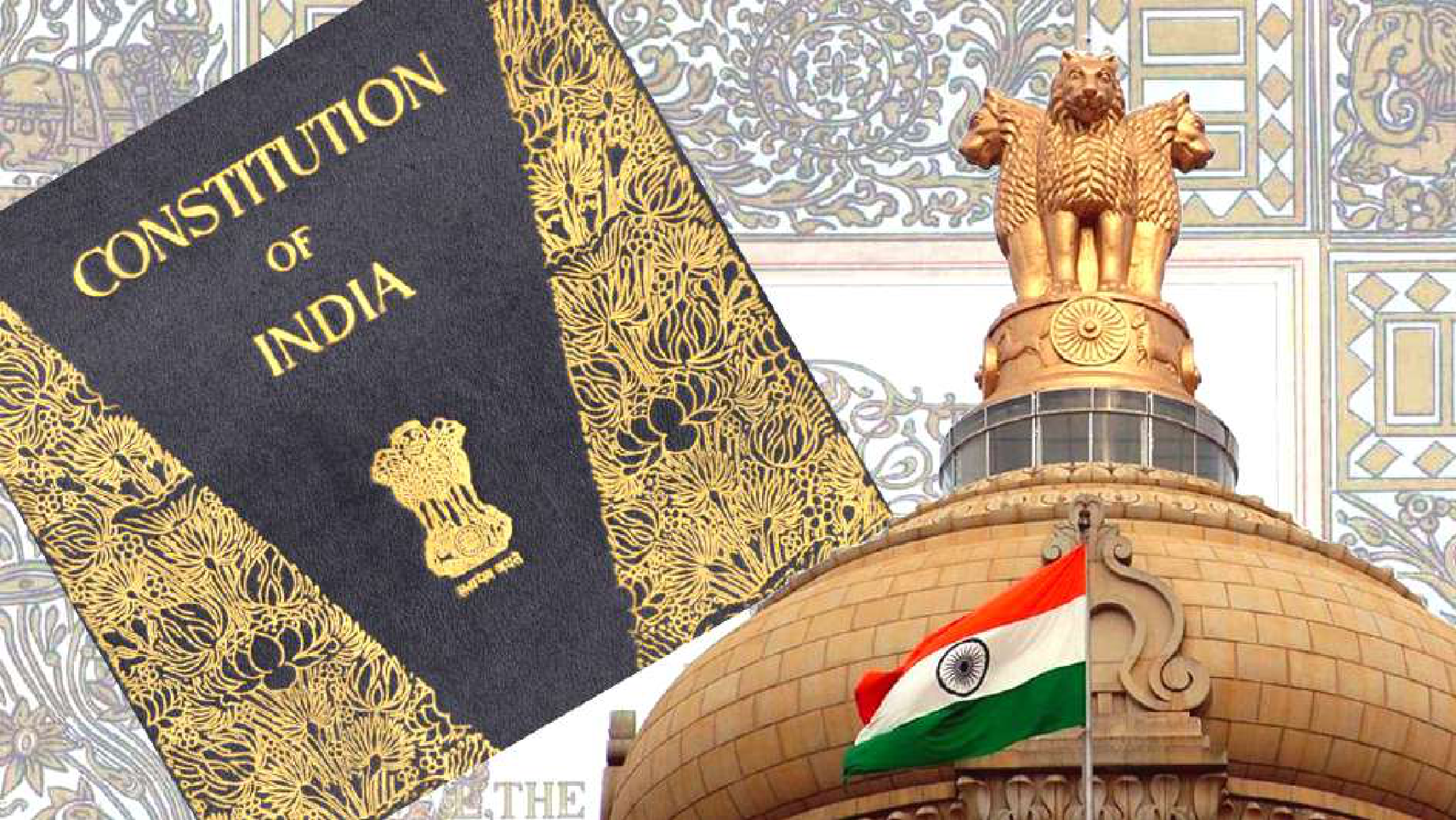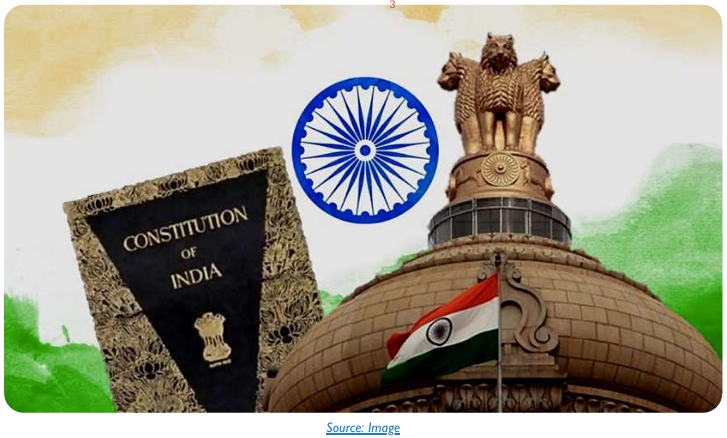Introduction
The term social security which may be known by different names (such as social assistance, safety nets, social funds and social protection), is understood and practiced in both developed and developing countries as what may be called collective care arrangements to meet contingencies. The United Nation Development Programme (UNDP) states that for most people, a feeling of insecurity arises more from worries about daily life than from the dread of a cataclysmic world event79 . A person who is already employed is concerned primarily with the protection of his income in contingencies, whereas a person who is poor, has no employment, is primarily concerned with securing a work and thus some livelihood, with the basic needs problem. Hence given the dimension of the informal economy and massive and persistent poverty in the developing countries, the concept of social security has to be suited to the actual situation of these countries and hence to include the idea of poverty reduction as a necessary condition for attaining a minimal stage of development.
There has already been some attempt to broaden the concept of social security in the context of developing countries, for instance by Dreze and Sen by distinguishing two different aspects, viz., protection and promotion80 .The former is concerned with the task of preventing a decline in living standards while the latter refers to the enhancement of general living standards and to the expansion of basic capabilities of the population81 .The protective form of social security has been explained by International Labour Organisation in its Convention No. 102, which enumerates nine risks or core contingencies from which unorganised or informal workers need to be protected that lead to the stoppage or substantial reduction of earnings namely; 1) Sickness 9 2) Maternity 10 3) Employment Injury11 4) Unemployment12 5) Invalidity13 6) Old Age14 7) Death15 8) Need for long term medical care16 and 9) Need to support families with children82 .
In the Indian context wealth inequality continues to plague the country with about 22 percent of the population live below the poverty line83 . Chronic poverty and wealth inequality persist because marginalised populations face vulnerability impelled by factors such as unemployment, social exclusion, ailment, disability and market fluctuation. Social-protection policies and programmes are paramount in tackling these issues. In addition to enhancing labour-market efficiency and providing income security to the poor and vulnerable, they address multiple facets of poverty by building resilience against socioeconomic crises and shocks, e.g. health hazards, disability, unemployment and old age.Through mechanisms such as social insurance, direct cash-transfer schemes and public work programmes, social protection provides safety nets for the poor and helps them mitigate risks. According to the World Bank, social safety nets reduce the poverty gap by 15 percent and the poverty headcount rate by eight percent84 . The National Commission on Labour in India has observed that “social security envisages that the members of a community shall be protected by collective action against social risks causing undue hardship and privation to individuals whose prime resources can seldom be adequate to meet them”85 .
Social Security Legislations in Independent India
India has enacted several social security legislations.The Constitution of India provides basis for enactment of these legislations by both the Parliament and the State. These laws could be divided under the general and special category. The general laws cover both the organised and unorganized sector and the special laws are applicable for certain groups of unorganised workers. Although prima facie the general laws do not cover the unorganised sector, but the unorganised workers come within their purview on the basis of certain enacted provisions, supported by judicial interpretation.
General Laws
- The Employees’ State Insurance Act, 1948: It covers factories and establishments with 10 or more employees and provides for comprehensive medical care to the employees and to their families in the form of cash benefits also during sickness and maternity and monthly payments in case of death or disablement.
- The Employees’ Provident Funds & Miscellaneous Provisions Act, 1952: It applies to specific scheduled factories and establishments employing 20 or more employees and ensures terminal benefits to provident fund, superannuation pension, and family pension in case of death during service. Separate laws exist for similar benefits for the workers in the coal mines and tea plantations.
- The Workmen’s Compensation Act, 1923: It requires payment of compensation to the workman or his family in cases of employment related injuries resulting in death or disability.
- The Maternity Benefit Act, 1961: It provides for 12 weeks wages during maternity as well as paid leave in certain other related contingencies.
i) The Payment of Gratuity Act, 1972: It provides for 15 days wages for each year of service to employees who have worked for five years or more in establishments having a minimum of 10 workers.
Table 1: General Social Security Legislations in India
| Laws | Objectives | Coverage | Eligibility | Benefits |
| Employees State Insurance Act, 1948 | To provide for healthcare and cash benefits in case of sickness, maternity and employment related injury | Factories/ establishments to which the law is made applicable by the Govt. | Employees drawing pay not exceeding Rs. 5000 per month | Benefits for sickness, maternity, disability and death, for dependents |
| Employees’ Provident Fund & Miscellaneous
Provisions Act, 1952 |
To provide compulsory provident fund, pension, deposit linked insurance. | Factories / Establishments employing 20 or more employees (in Scheduled industries); other establishments notified by the central Govt. | There is no wage limit for coverage provided the workman is not covered by the Act. | Provident fund, pension, and refundable withdrawals. |
| Workmen’s Compensation Act, 1923 | To provide compensation for workmen in cases of industrial accidents/ occupational diseases resulting
in disablement or death. |
Persons employed in factories, mines, plantations, railways and other establishments mentioned in Schedule II of the Act. | The benefits are payable in respect of work-related injuries to the
workers dependents not covered by the ESI Act. |
Compensation for death, disablement, and occupational disease. |
| Maternity Benefit Act, 1961 | To provide for maternity protection before and after child birth | Factories, mines, plantations, commercial and other establishments to which the law is extended. | There is no wage limit for coverage provided the woman is not covered by the ESI Act | Payment for actual absence upto 12 weeks on average daily wages, minimum wage or Rs. 10. |
| Payment of Gratuity Act, 1972 | To provide for payment of gratuity on ceasing to hold office. | Factories, mines, oilfields, plantations, railway companies, shops and establishments
also to other establishments to which the law is extended |
Five years continuous service is required for entitlement of gratuity | 15 days wages for every completed year of service
or part thereof in excess of 6 month subject to maximum of Rs. 3,50,000.The seasonal employees are entitled to gratuity at a rate of 7 days wages for each season. |
Source: Ministry of Labour and Employment, Director General of Employment and Training and Economic Survey (various years) in A.C Dhas & M. Helen, Social Security for Unorganised Workers in India.
Special Laws
- Contract Labour (Regulation & Abolition) Act, 1970: It aims to regulate the employment of the contract labour in every establishments employing twenty or more workmen and also to provide for its abolition in certain circumstances
- Inter-State Migrant Workmen (Regulation of Employment and Conditions of Service) Act, 1979: An act to provide the employment of inter-State migrant workmen and to provide for their conditions of service.
- Cine-workers welfare Fund Act, 1981: An Act to provide for the financing of activities to promote the welfare of certain cine-workers. “cine-worker” means an individual who has been employed in connection with the production of not less than five feature films to work as an artiste (including actor, musician or dancer) or to do any work, skilled, unskilled, manual, supervisory, technical, artistic or otherwise; and whose remuneration with respect of each of any five feature films, has not exceeded 1600/- per month in case of monthly payment and Rs. 8000/- where such remuneration has been by way of a lump sum.
- Iron Ore Mines, Manganese Ore Mines and Chrome Ore Mines Labour Welfare Fund Act, 1976: An Act to provide for the financing of activities to promote the welfare of persons employed in the iron ore mines, manganese ore mines and chrome ore mines.
- Limestone and Dolomite Mines Labour Welfare Fund Act, 1972: An Act to provide for the levy and collection of a cess on limestone and dolomite for the financing of activities to promote the welfare of persons employed in the limestone and dolomite mines.
- Mica Mines Labour Welfare Fund Act, 1946: An Act to constitute a fund for the financing of activities to promote the welfare of labour employed in the mica mining industry.
- Beedi Workers welfare Fund Act 1976: An Act to provide for the financing of measures to promote the welfare of persons engaged in beedi establishments.
- Building and other Construction Workers (Regulation of Employment and conditions of service) Act, 1996: An Act to regulate the employment and condition of service of buildings and other construction workers and to provide for their safety, health and welfare measures and for other matters connected therewith or incidental thereto.

In addition to the above, both the Central and State Governments have formulated certain specific schemes to support unorganised workers, both promotional and protective. Social security for the unorganised sector is being provided through centrally funded Social Assistance Programmes, Social Insurance Schemes, and social assistance through welfare funds of the Central and State Government and public initiatives.The centrally funded Social Assistance Programme includes a Scheme called the National Social Assistance Programme (NSAP) which was launched through the following 3 subschemes i) National Old Age Pension Schemes (NOAPS); ii) National Family Benefit Schemes and iii) National Maternity Benefit Scheme86 .
NSAP also provides opportunities for linking social assistance package to schemes for poverty alleviation and a provision of basic minimum services87 . The Social Insurance Schemes available to the unorganized sector are through the LIC such as Social Security Group Insurance Scheme. All persons in the age group of 18 to 60 years belonging to the 24 approved occupation groups are covered88 .At present, to provide social security to some of the unorganised workers, welfare funds for various groups have been set up by the government without burden on the budget. These welfare funds have been developed by way of collecting cess from the persons who are selling the finished products89 .
At the State level, the Old Age Pension Scheme (OAPS) was introduced in all States and Union Territories. Kerala was the First State to implement the pension scheme for agricultural workers in 1982, followed by Tamil Nadu in the same year.Andhra Pradesh introduced the OAPS to the landless agricultural workers in 1983. The Government of Maharashtra introduced a pension scheme in 1980 to support the physically handicapped and economically weaker sections of society.
The Government of West Bengal introduced a State Assisted Scheme of Provident Fund for Unorganised Workers (SASPFUW)90 . Similarly, the Government of Punjab has been implementing a social security scheme for farmers and labourers in case of death or injury on duty. To extend social security cover to manual workers, auto- rickshaws, washermen, tailors, handcraft workers etc., the Government of Tamil Nadu has introduced a new social security and welfare scheme in 200191 . Such state level initiatives are also carried out in Kerala, Bihar, Uttar Pradesh, Madhya Pradesh, Haryana and Gujarat.
The Unorganied Sector in India: Need for Social Security
The Indian economy is characterized by the existence of a large proportion of unorganized labour. As per a survey carried out by the National Sample Survey Organization (NSSO) in 2009–10, the total employment in the country was of 46.5 crore comprising around 2.8 crore in the organized and the remaining 43.7 crore workers in the unorganized sector. Out of these workers, 24.6 crore were employed in the agricultural sector, about 4.4 crore in construction work and the remaining in manufacturing and service. At over 90 percent of the total workforce, informal labour is the norm, and contributes up to 50 percent to the national income92 . This predominance of informal labour suggests high susceptibility and low levels of social protection in the country.
Since independence various governments have instituted various protective social- security schemes for its organised sector, as highlighted in the previous section.While in theory, these policies should be applicable to both formal and informal workers. However, in practice, their reach is limited to formal workers with long-term contracts. As per the ILO, the proportion of informal workers in organised manufacturing more than doubled between 1990 and 2012, from 15.6 percent in the late 1990s to 34.7 percent in 2011–12. Yet, only 79 percent of such workers had written contracts and only 23.8 percent were entitled to social-security benefits93 . Further, according to the 68th National Sample Survey, 93.3 percent of the informal workers in non-agricultural activities were not entitled to any form of social security during 2011–1294 . Most daily- wage labourers continue to suffer from poor working conditions and scanty wages. They are extremely vulnerable to occupational hazards, especially those working in construction, mining or chemical factories. Considering their high exposure to risks and contingencies along with low incomes, a comprehensive social security system is the need of the hour.
Unorganised Workers’ Social Security Act, 2008: Key Features
The Unorganised Workers Social Security Act (UWSSA) was debated and passed by the Rajya Sabha in October 2008 and by the Lok Sabha in December 200895 . The Act came into force on 30 December 2008 when the President gave her assent. This legislation was an outcome of years of campaigning by organisations working with unorganised sector workers. During the years 2006 and 2007, the slogan Social Security Now had echoed across various cities96 . Millions of workers had participated in protests to draw attention to their problems and acknowledge their rights. In light of the challenges faced by the unorganized workers, the National Commission for Enterprises in the Unorganised Sector (NCEUS), led by economist Arjun Sengupta, proposed two draft Bills (for agricultural and non-agricultural workers) in 2007, with a comprehensive set of recommendations based on inputs from trade unions. The NCEUS also submitted a report on Social Security for Unorganised Sector Workers in 2006.The NCEUS’ submissions aimed to regulate the employment and conditions of service for unorganised-sector workers and provide for their social security, health and welfare.The UWSSA, 2008 was a result of the NCEUS’ report. The prime objective behind the Act was to provide social security and welfare of the unorganized workers and all matters that is in connection with it.
The UWSSA has six chapters. Chapter 1 includes the scope of coverage and the definitions of terms; Chapter II names the social security schemes and identifies the sources of funding; Chapter III and IV deal with the constitution of national and state Social Security Boards and their powers; Chapter V deals with the registration of unorganised workers and the eligibility for receiving social security benefits; and Chapter VI deals with miscellaneous provisions, including the powers of the central and the state governments to make directions and lay rules. It has two schedules: Schedule I, with the names of the social security schemes for unorganised workers, and Schedule II, with a list of Acts applicable to unorganised workers.
Enabling Framework for Social Security Schemes
The Act enables the central government to formulate welfare schemes for unorganized sector workers. These welfare schemes consist of health and maternity benefits, life and disability cover, old age protection and any other benefit by the government.The Act, lists down 10 schemes for the unorganized sector workers97 . Further, the Act also enables state governments to formulate welfare schemes which are related to provident fund, employment injury benefits, educational schemes for children, and skill up graduation of workers, funeral assistance and old age homes. These notified schemes may be wholly funded by the central or state government or both and it might require contributions by the beneficiaries of the schemes or their employers to unorganized sector workers.
Establishment of State and National Social Security Advisory Boards
The Act provides for institution of a National Social Security Advisory Board to recommend formation and implementation of suitable welfare schemes for the unorganized sector workers98 . This national board will consist of an appointed chairperson, a member secretary, and 31 nominated members. Further, the Act seeks to establish state level Social Security Advisory Boards. These state boards will have alike functions as the central board at the relevant state and district levels. Each state board consists of an appointed chairperson, a member secretary, and 26 nominated members.
Provision for Registration and Smart Cards for Unorganized Sector Workers
The Act requires the unorganized workers to mandatorily apply for registration with the district administration. As per the Act, for registration an individual must be 14 years of age or older and should declare that he is an unorganized sector worker. Upon registration, the district administration shall issue a smart card which will carry a unique identification number. Further, if any scheme requires contribution from worker, then the worker will become eligible for the scheme only upon contribution.
Key Issues
Social Security Not Defined: The Act does not give any clarity on what the state means by `social security` or any of the benefits it proposes. Chapter II (3(1)) says that the central government shall `formulate and notify from time to time, suitable welfare schemes for unorganised workers on matters relating to a) life and disability cover; (b) health and maternity benefits; (c) old age pensions and (d) any other benefits as may be determined by the Central Government99 .This is followed by the statement (3(2)) that `the schemes included in the schedule I of this Act shall be deemed to the welfare schemes under sub-section (1)`. Social security cannot be reduced to schemes but should be substantively articulated in terms of concrete entitlements from the perspective of rights derived from constitutional rights and principles.
Livelihood Systems Based Workers Excluded: The definitions exclude workers dependent on livelihood systems such as forest workers and fish workers, who cannot be brought within the ambit of home-based workers, self-employed workers and wage workers100 . For instance, most of the traditional fish workers in India follow a sharing system, in which the catch is shared among the boat owner and the crew. This excludes them from being considered as `workers` because they do not receive wages.
Migrant Workers Excluded: The Act does not cover unorganised cross-border temporary migrant workers, who have gone to other countries to be engaged in dirty, difficult and dangerous jobs such as construction, cleaning, domestic work, paramedical work and such other occupations in manufacture and service sectors. When on work, they contribute to the national income by their remittances.These workers are a vulnerable and require social security protection. Similarly, the definition does not address the specificity of vulnerable internal migrant workers.The words, `migrant worker`, appear only in the definition of wage workers101 although migrant workers are engaged in various kinds of occupations, in which they experience vulnerabilities different from that of local workers.
Non Justiciabliliy of Social Security: A justiciable right is one in which the aggrieved individual can seek remedy in a court of law. To make a right justiciable, it should be defined and be available for the individual for a sufficiently long period of time. Although the stated objective of the Act is to provide social security and welfare to the unorganised workers, the Act does not confer any defined right to social security for them. In the Act, social security schemes are not included as part of the body of the Act and are given in a schedule. This essentially means that schemes can be changed at any point of time by a notification, and not after discussion in the Parliament, thereby denying the workers the benefit of consistency and justiciability.
No Nodal Ministry for Implementation: Though the Act has been introduced by the Ministry of Labour, the social security schemes mentioned in the schedule are managed by various ministries. Moreover, Chapter IV Section (8) gives the record-keeping functions of the provision of social security for unorganised workers to the district administration, the panchayat and to the local urban bodies. Though the Unorganised Workers` Social Security Act has been introduced by the Ministry of Labour, no role has been given to the labour administration to implement the Act. The national and the state Social Security Boards are also not vested with enough powers to administer social security schemes. This raises doubts on the commitment of the government about the delivery of social security to the unorganised workers.
Absence of Grievance Redressal Machinery: Despite a strong recommendation from the Parliamentary Standing Committee on Labour102 , the Act does not provide for a grievance redressal mechanism. The fairness and effectiveness of the implementation of the Act greatly depends on the availability of a functional institution of grievance redressal mechanism, through which workers have recourse to a method for voicing their complaints about violations.
Lack of Budgetary Expenditure: Between 2012 and 2018, the average union budget outlay for major social security schemes in India was 0.07 percent of the GDP (accounting for 0.57 percent of the total budget expenditure)103 . This amount includes the expenditure to create the National Platform of Unorganised Workers as well as key schemes under the UWSSA, such as the RSBY, National Social Assistance Programme (NSAP) and Aam Admi Bima Yojana. It also involves independent schemes such as the APY and the Pradhan Mantri Jeevan Jyoti Bima Yojana. In 2017–18, the budget estimate for expenditure on these schemes was merely INR 11,425 crores (114.25 billion), whereas India’s unorganised workforce accounted for approximately 46.8 crores104 . These figures demonstrate the inadequacy of the budgetary spending on social security for the unorganized workforce.While the private- sector employees and civil servants are statutorily entitled to comprehensive benefits and pensions through their employers, provisions for the unorganised sector are arbitrary and substandard.
Unutilised Funds: As a follow up to theAct a National Social Security Fund for unorganized workers was set up in 2010-11 with an initial capital of Rs 1000 crore.The Ministry of Labour and Employment was the nodal ministry for implementing the budget announcement on NSSF. The fund was to be used for schemes formulated for welfare of unorganised sector workers. A committee was constituted for recommending the schemes to be funded from the NSSF. The National Social Security Fund was to be transferred from the Consolidated Fund of India to the NSSF.Table 2 shows the fund allocation to NSSF as per the CAG report 2016-17.
Table 2: Fund Allocation to the NSSF in Rs (crores)
| Year | Sanctioned Provision | Actual Disbursement to NSSF | Short Release | Percentage of Short Release |
| 2010-11 | 1000 | 1000 | 0 | 0 |
| 2011-12 | 1000 | 500 | 500 | 50 |
| 2012-13 | 1000 | 120 | 880 | 88 |
| 2013-14 | 609.55 | 200 | 409.55 | 67 |
| 2014-15 | 607 | 107 | 500 | 82 |
| 2015-16 | 607 | Nil | 607 | 100 |
| 2016-17 | 0 | Nil | – | – |
| Total | 1927 |
Source: CAG Report 2016-17
However, the CAG audit report on Union government accounts 2016-17 stated that funds lying in the National Social Security Fund could not be utilised since its inception and unutilised fund accumulated to Rs 1927 crore.Thereafter, the entire unutilized/accumulated amount of Rs 1,927 crore lying in Public Account under NSSF was written back to CFI in March 2017 by the Department of Economic Affairs.
Recommendations
The term social security needs to be addressed in the Act. It cannot be reduced to schemes but should be articulated in terms of concrete entitlements with comprehensively defined expectations and guidelines from the perspective of rights derived from constitutional principles.
The Act should redefine the term “unorganised worker” to include all those who are not formally employed in the organised sector or covered by the EPF and ESIC, including livelihood system based workers and agricultural and contract labourers. Further, the Act should pay special attention to those individuals and groups, who have traditionally faced difficulties in exercising rights. Additional measures are necessary for adivasis to protect their right to water, land and forest, and for migrant workers and dalits.
The national and state social-security boards must re-examine their structures and roles to ensure accountability and the efficient implementation and monitoring of the schemes at the district and sub-district levels.
The Act should allow for a feedback and grievance-redressal mechanism in collaboration with trade unions, to enable dispute settlements and participatory planning. .Further, state governments should seek to improve their social-protection delivery systems, by partnering or consulting with experts from the ILO and other international agencies.
For effective implementation of any Act, a nodal ministry is essential, to bring coherence and consistency to the delivery of social security rights and a well-defined administrative mechanism.
Going forward the Act should declare universal access to social-protection schemes for all unorganised workers, regardless of whether they fall below the national poverty line. The budgetary allocations need to be increased sufficiently and all funds need to be utilized effectively. As per a 2010 CBGA report an allocation of Rs 22841 crore needs to e made for universal social security coverage.
Social Security has been universally accepted as the responsibility of the state to protect labour from contingencies. In the context of developing countries such as India, it needs to be viewed from an even broader perspective as it is crucial in tackling extreme poverty and ensuring equitable development. In India about 90 percent of the workforce is from the unorganized sector, yet, they continue to be excluded from the current social security schemes.
In this regard the enactment of UWSSA 2008 was an important milestone in providing some sort of protection to the large informal workforce. However, inherent structural gaps and inadequacies coupled with insufficient budgetary allocations and poor implementations have rendered the Act completely ineffective.
Going forward the government should modify some of the provisions and more importantly ensure sufficient funding.This Act has opened up an important opportunity for the protection unorganised workers. However, the basic question of how it will translate into adequate and justiciable social security rights for the unorganised workers still remains.
References
- Basic Statistics 2017 (CSV), ADB Data
- Beveridge Committee Report,
- Dreze, Jean and Sen, Amartya (1989), Hunger and Public Action, Oxford: Claredon Press
- India Labour Market Update, International Labour Organisation,
- Informal Sector and Conditions of Employment in India, NSS 68th Round (June 2011–June 2012), Report 557.
- Law Commission of India, 1974, Sixty second report on the Workmen’s Compensation
- NSSF Fund Allocation, CAG Report 2016-
- Planning Commission Reports on Labour and Employment in the 10th Plan (2002-2007)
- Madhava Rao Social Security Administration in India: A Study of Provident Funds and Pension Scheme,The Icfai University Press, 2007.
- Report of National Commission on Labour, GoI,
- Report of the Committee on Unorganised Sector Statistics, National Statistical Commission, GoI,
- Reports on Social Security, NCEUS,
- The State of Social Safety Nets,World Bank Group,
- Total Union Budget Outlay for Major Social Security Schemes Union Budget Analysis 2017–18, CBGA, New
- Unorganised Sector Workers Social Security Act, 2008, GoI
- World Social Protection Report, 2019,
Footnotes:
79 India: Economic Reforms and Labour Policy
80 Dreze, Jean and Sen, Amartya (1989), Hunger and Public Action, Oxford: Claredon Press.
81 Ibid
82 The 1st ILO instrument to deal directly with family benefit was the Income Security Recommendation, 1944 (No. 67). In 1952, the Recommendation was codified in the Social Security (Minimum Standards) Convention (No. 102), which simply states “responsibility for the maintenance of children”
83 Basic Statistics 2017 (CSV),” ADB Data Library
84 The State of Social Safety Nets, World Bank Group, 2015.
85 Report of National Commission on Labour, 1969
86 Planning Commission Reports on Labour and Employment in the 10th Plan (2002-2007)
87, 88, 89, 91 Ibid
90 The scheme covers all wage employed and self-employed workers between the age of 18 to 55 years in the unorganized sector having an average family income of not more than Rs. 3500 per month (Ibid).
92 Report of the Committee on Unorganised Sector Statistics, National Statistical Commission, GoI, 2012.
93 India Labour Market Update, International Labour Organisation, 2017.
94 Informal Sector and Conditions of Employment in India, NSS 68th Round (Jun 2011–Jun 2012), Report 557.
95 https://www.prsindia.org/billtrack/the-unorganised-sector-workers-social-security-bill-2007-434
96 https://thewire.in/labour/national-social-security-fund-unorganised-workers
97 Unorganised Sector Workers Social Security Act, 2008 (Schedule 1)
98 Unorganised Sector Workers Social Security Act, 2008, Chapters III, IV and V
99 Unorganised Sector Workers Social Security Act, 2008 (Sec 3(1))
100 Unorganised Sector Workers Social Security Act, 2008, Sec 2, Sec 2(n)
101 Unorganised Sector Workers Social Security Act, 2008, Schedule 1, Chapter IV
102 https://www.prsindia.org/sites/default/files/bill_files/scr1197091003_unorganised_sector_1.pdf
103 World Social Protection Report, 2019, ILO.
104 Total Union Budget Outlay for Major Social Security Schemes Union Budget Analysis 2017–18, CBGA.








